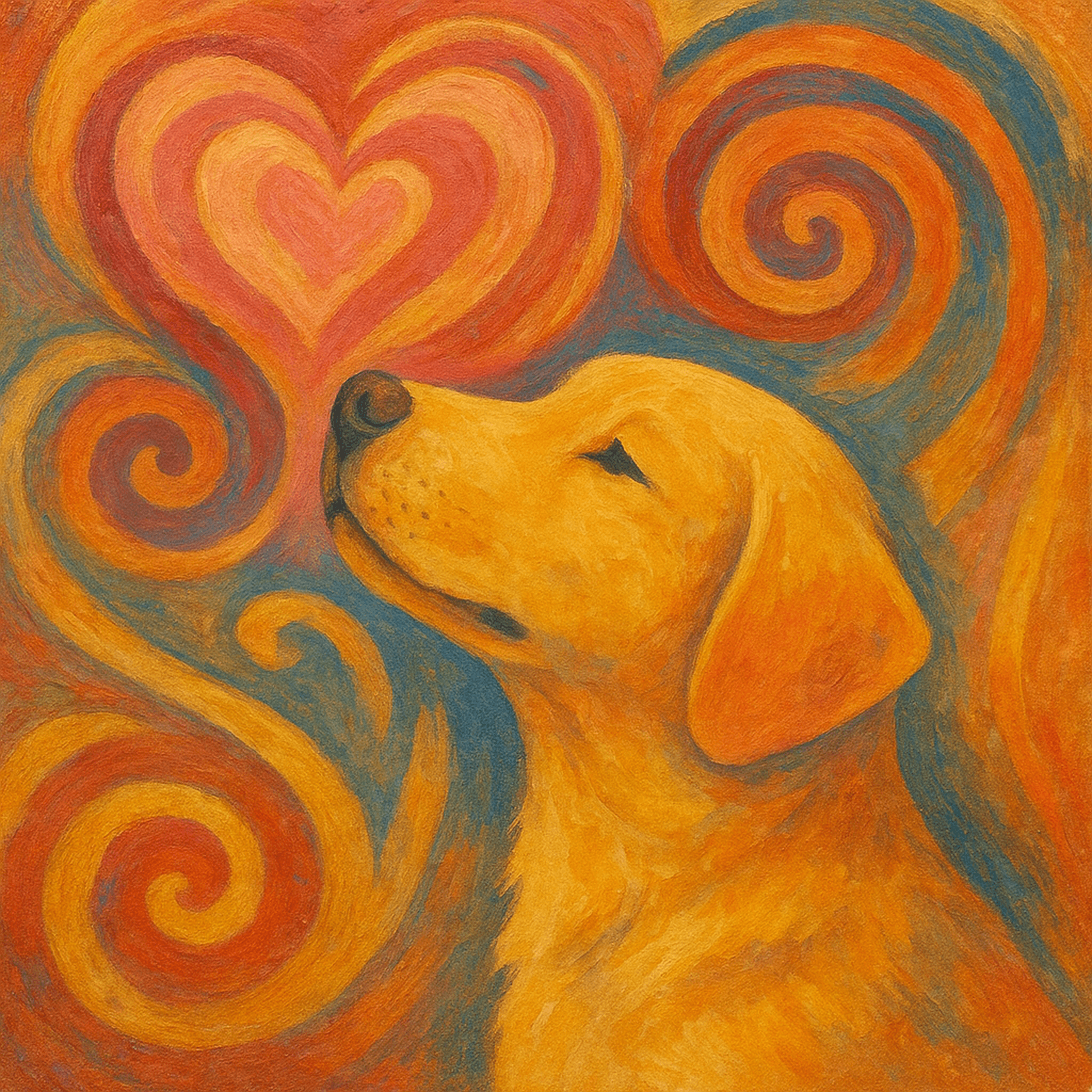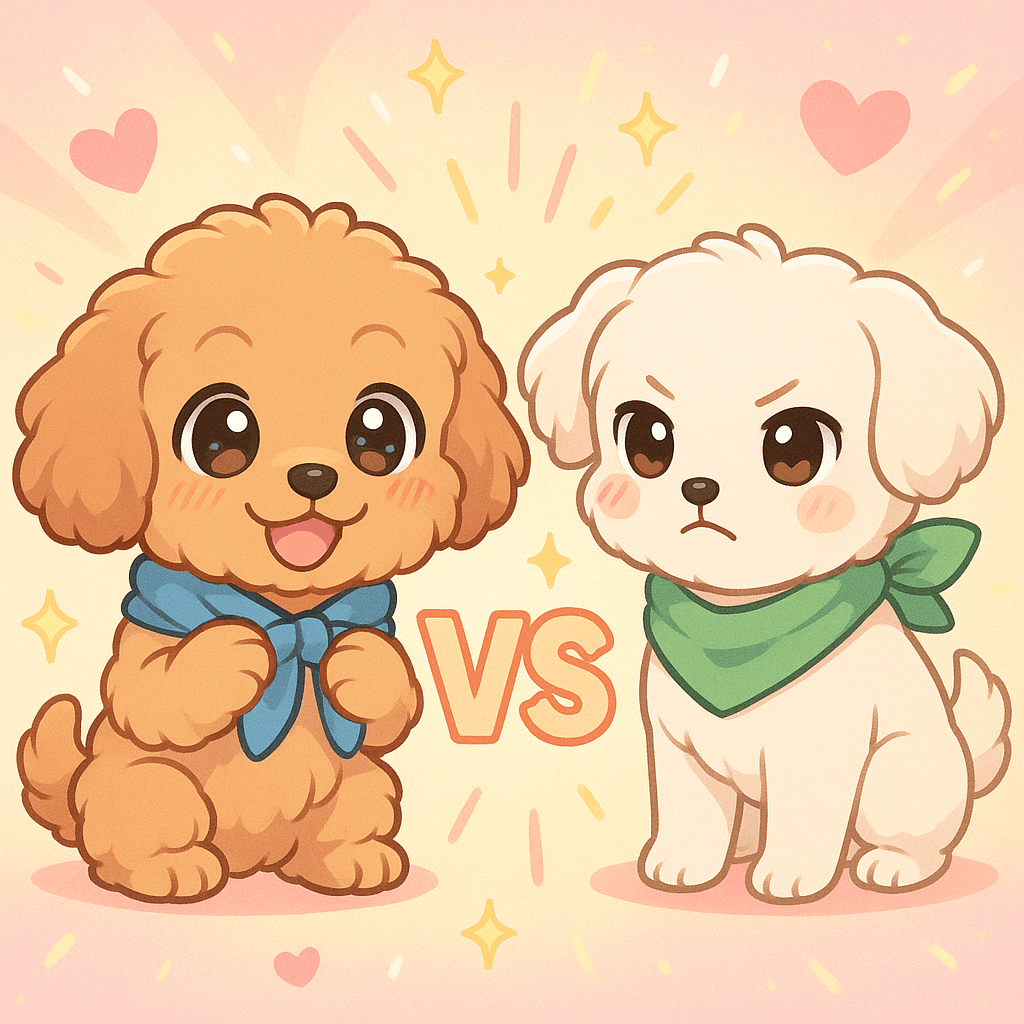
Do Dogs Have Feelings? Scientific Evidence, Emotional Stories, and Surprising Facts That Will Change the Way You Look at Dogs
Does your dog really love you?
Have you ever wondered what your dog feels when you leave for work? Is his joy at seeing you just instinct, or something more? Is he capable of missing you, being sad, or even... loving you?
For many dog owners, the answer is obvious. But what does science say? Are dogs' feelings the same as ours? Is this just anthropomorphization, or do dogs truly have the ability to experience emotions?
We invite you on a fascinating journey through the world of dog psychology, neurology, the experiences of behaviorists, and stories that touch your heart.
Dogs and Emotions – What Does Science Say?
Dog brain and human brain
Scientists have proven that dogs possess brain structures responsible for emotions, such as the amygdala and limbic system. Furthermore, levels of neurotransmitters like dopamine and oxytocin function in dogs very similarly to those in humans.
Oxytocin – the love hormone also in dogs
When you look into a dog's eyes, your body releases oxytocin—the same hormone responsible for the bond between mother and child. Research shows that the same thing happens in dogs!

🧠 What does science say about dog emotions?
In recent years, scientists have been increasingly studying the emotional lives of dogs, providing evidence of their ability to feel and recognize emotions.
Dogs sense human emotions
Research conducted by scientists at the University of Bristol has shown that dogs can detect stress in humans through their scent. In the experiment, after being exposed to the sweat of a stressed person, the dogs exhibited a pessimistic attitude, suggesting that a dog's emotional state can be influenced by their owner's emotions. ( National Geographic )
Dogs recognize human emotions
A study published in ScienceDaily has shown that dogs can combine visual and auditory information to recognize positive and negative emotions in humans—something previously thought to be unique to humans. This confirms that dogs possess a developed ability to empathetically understand our moods. ( ScienceDaily )
Brain structures responsible for emotions
Research published by Neuroscience News confirms that dogs possess a limbic system—a brain structure responsible for emotions that functions similarly to humans. This allows them to experience joy, fear, anger, and attachment. Hormones like oxytocin and dopamine regulate these emotional responses and build a bond with their caregiver. ( Neuroscience News )
This is just the beginning of exploring the depths of the canine world. Neurobiology and behaviorism are developing rapidly, revealing more and more similarities between dogs and humans.
Dog Psychology – The Future of Research
What feelings does a dog experience?
Dogs possess a rich emotional world that in many respects resembles that of humans. Although some of their emotions are less complex than those of humans, their depth and authenticity are undeniable. Thanks to neurological and behavioral research, we now know that dogs experience both simple feelings and more complex emotional states, which influence their behavior, health, and relationships with humans.
Joy – visible to the naked eye
A dog expresses joy by wagging its tail, getting excited, jumping up and down, smiling with its face, and barking in a friendly way. Joy can be felt at the sight of a loved one, while playing, going for a walk, or receiving a favorite treat.
Longing and separation anxiety
Dogs become strongly attached to their owners and family members. When left alone, they may experience homesickness and sometimes even separation anxiety, manifesting itself through howling, destroying objects, pacing nervously around the house, or relieving themselves in the house despite prior toilet training.
Sadness and mourning
Just like humans, dogs can experience loss—whether of a human or another animal they were bonded with. Symptoms include apathy, loss of appetite, decreased interest in their surroundings, and withdrawal. Some dogs take several weeks to regain emotional equilibrium.
Anger and frustration
While dogs don't hold grudges like humans, they can experience anger, especially when something frustrates them—for example, lack of exercise, unmet needs, or inconsistent treatment. This can manifest itself through barking, growling, chewing, or ignoring commands.
Love – the most frequently asked question
Can a dog fall in love?
This question may seem funny, but many owners wonder if dogs can experience something akin to falling in love. The answer isn't clear-cut—it all depends on how we define "falling in love."
If we're talking about strong emotional attachment, a desire for closeness and loyalty, then yes, a dog can "fall in love" with a person or another animal. Dogs choose their favorite people, with whom they form a deeper bond, demonstrating greater trust, joy, and peace in their presence. They can also miss and experience emotional separations.
However, falling in love in the romantic sense, as understood in humans, does not occur in dogs. Their emotionality is based on instincts, attachment, and building security, not on the abstract concept of romantic love. What a handler perceives as falling in love is most often an expression of a strong emotional bond, which a dog can cultivate throughout its life.
A dog's love isn't just an instinctive response to the person who feeds and walks them. It's a deep, emotional bond that develops through shared experiences, safety, and daily closeness. Dogs express love in many ways—through eye contact, following their owner, gentle nose touches, or quietly staying close.
Studies show that when a dog looks into its owner's eyes, their bodies release increased levels of oxytocin, a hormone associated with love and bonding. This is the same mechanism that occurs between a mother and her child.
A dog's love is selfless—it doesn't expect reward, it's not calculated. It's based on trust, presence, and the shared experience of everyday life. That's why dogs remain loyal even when humans fail. Their affection is pure, consistent, and often deeply moving. One look is enough to know that we mean the world to them.
True stories that move you
Hachikō – a symbol of fidelity

Hachikō's story is one of the most moving tales of canine loyalty, becoming a symbol of unwavering devotion worldwide. Hachikō was an Akita dog born in Japan in 1923. He was adopted by Professor Hidesaburō Ueno, who worked at the University of Tokyo.
Every day, Hachikō would accompany his guardian to Shibuya Station and return a few hours later to greet him after work. Tragically, one day in 1925, Professor Ueno died suddenly at the university and never returned to the station. Although he couldn't understand it, Hachikō faithfully appeared on the platform at the same time every day for the next nine years, nine months, and 15 days.
At first, passersby didn't understand his presence, but over time, they began bringing him food and water. Hachikō's story spread throughout the media, and the dog gained nationwide fame as a model of fidelity and love. He died in 1935 in the same place where he had waited for years.
Today, a statue of Hachikō stands in front of Shibuya Station – a meeting place and symbol of selfless devotion. This story teaches us that dogs' feelings run deeper than many of us realize, and their loyalty can transcend time and death.
Dogo Argentino Morocho – the hero who stood against the puma

In 2008, in the Argentine province of Tucumán, an incident occurred that will forever be remembered in the history of canine courage and loyalty. Two girls, Sofía Cappalletti and her friend Yoli, went fig picking near their family farm. They were accompanied by a Dogo Argentino named Morocho, known for his courage and devotion to his family.
While climbing a tree, Yoli spotted a puma among the branches. Terrified, she fell to the ground, as the predator approached Sofia. Without hesitation, Morocho then lunged at the large cat. He engaged it in a fierce battle, risking his own life. Despite being seriously injured, he managed to chase the puma away and save the girls.
After several days of treatment, Morocho recovered, and his courage became a symbol of canine loyalty and love.
Watch Morocho's story on YouTube: Dogo Argentino "Morocho" saves 2 girls from Puma attack
More about the Dogo Argentino breed
7 Signs Your Dog Really Loves You
- He stares at you with a soft gaze.
- Follows you around the house – even to the bathroom.
- He's happy to see you, even if you're only gone for a moment.
- Sleeps next to you or with his head on your bed.
- He brings you his favorite toy – he shares something important.
- Licking your hands or face is a sign of trust.
- Protects you and your emotions – knows when you are sad.
Do all dogs show affection the same way?
How do a dog's emotions differ from those of other pets?
While many pets can bond with humans, dogs are the most similar to humans in terms of emotional experience. Cats can also demonstrate attachment, but they are much more independent and express emotions more subtly. Rabbits and guinea pigs can respond to stress and adapt to routines, but they don't exhibit the same emotional responses as dogs.
Importantly, dogs demonstrate the ability to recognize human emotions in an integrated manner, combining visual, auditory, and olfactory cues. They can also modulate their behavior in response to their owner's mental state—a unique trait in the pet world.
It is believed that over thousands of years of co-evolution with humans, dogs have learned not only to obey but also to "read" people and empathize with them. This is why it is said that a dog is not only a companion, but also an emotional mirror of its owner.
Like humans, dogs have different personalities. Some are more expressive, others more reserved. Breed, upbringing, life experiences, and genetics all influence how a dog expresses emotions.
What does this mean for caregivers?
The answer to the question "do dogs have feelings?" is yes – and it requires specific action from us, humans. A dog doesn't just need a bowl of food and a short walk – they also need emotional security, closeness, and empathy. We are responsible for their mental well-being.
How to teach a child to understand a dog's emotions?
Children have a natural desire to interact with animals, but they don't always recognize the signals a dog sends. Education in this area can significantly increase safety and strengthen the bond between child and pet. Here are some tips:
- Teach your child to read a dog's body language – show when the dog is feeling good (relaxed body, wagging tail) and when it is stressed (licking its lips, yawning, turning its head).
- Do not force your dog to interact with you – your child should know that a dog – just like a human – can have a “bad day” and need some peace and quiet.
- Reinforce positive interactions – praise your child for calm behavior in the presence of the dog, gentle petting, and patience.
- Get involved in the care – feeding, brushing or going for walks together builds a sense of responsibility and empathy.
Understanding a dog's emotions as a child is an investment in a safe, trusting relationship that will last for years to come.
Dog therapy – when a dog helps heal
Dog therapy (kynotherapy) is a form of therapy that supports a person's emotional, social, and psychophysical development through contact with a properly trained dog. Therapy dogs help reduce anxiety, improve mood, develop empathy, and teach patience. Their presence has a beneficial effect on both children and adults, regardless of age, needs, or challenges.
The key to the effectiveness of dog therapy is dogs' extraordinary ability to empathetically read human emotions. They can recognize sadness, stress, or tension, and respond with their presence—calm, warmth, and touch. It's this empathy that makes a dog not only a companion but also a natural therapist.
Tosa Inu in dog therapy – an unusual dog therapist

The Tosa Inu is a breed known for its impressive stature, but also for its exceptional loyalty, calmness, and emotional intelligence. In the United States and in some specialized programs around the world, this breed is used to work with autistic children and adults with adjustment problems. Their calm demeanor and natural ability to build a strong bond with their caregivers make them ideal candidates for therapeutic work.
A well-socialized and trained Tosa Inu can:
- Help reduce tension and stress,
- Build a sense of security in the patient,
- Support the development of empathy and communication,
- Be a pillar of emotional stability for people with disorders.
See more about the Tosa Inu breed
Can every dog be a therapy dog?
Not every dog can be a therapy dog, but many dogs have a natural aptitude for it. Key characteristics include a calm disposition, high stress tolerance, openness to human contact, and the ability to respond empathetically to emotions. Proper training and socialization are essential for a dog to participate in therapy safely and effectively.
Dog therapy proves that dogs—regardless of breed—can provide incredibly profound support to humans. Their presence has a soothing effect on the nervous system, reduces tension, and improves well-being. This is further proof that canine affection is not only genuine but also exceptionally healing.
Depression in dogs – when emotions overwhelm
Yes, dogs can suffer from depression. Changes in residence, the death of a loved one, the loss of a canine companion, loneliness, or boredom can all lead to a profoundly low mood. Symptoms include apathy, social withdrawal, loss of appetite, and sometimes even aggression or housecleaning.
If you notice these symptoms, don't ignore them. Depression in dogs is a real problem that requires intervention: consultation with a behaviorist, introducing a routine, more walks, playtime, and sometimes even medication prescribed by a veterinarian.
Combining this knowledge with empathetic observation of your pet is the key to understanding what it really needs – not only physically, but also spiritually.
Summary
Yes, dogs have feelings. They rejoice, love, suffer, yearn, experience frustration, and are capable of experiencing loss. Their emotional world, though different from that of humans in its expression, is no less profound and authentic. Dogs can read our moods, support us in difficult moments, and even participate in emotional therapy—as silent companions in the healing of human souls.
In this article, we cited both scientific research and touching stories of dogs who have proven their loyalty and love in the most extreme situations. We also highlighted their biological ability to form bonds, respond to emotions, and demonstrate empathy. A dog's love knows no calculation or self-interest—it is a feeling pure, enduring, and full of devotion.
Therefore, every owner should be aware of the immense emotional value of their relationship with their pet. Understanding, empathy, and respect are key to a deep bond between human and dog—a bond that can last a lifetime.
Let's remember: a dog is not just an everyday companion, but a true friend who feels - perhaps more than we think.
Frequently asked questions (FAQ)
Can a dog love one person more than another?
Yes – they build the deepest bonds with those who provide them with emotional security.
Why is my dog happy when I come home?
It is the joy of being in the presence of a loved one.
Does my dog know when I'm sad?
Yes. Dogs sense moods and often respond empathetically.
Can a dog get offended?
While dogs don't "get offended" like humans, they may react by withdrawing or ignoring a negative experience. This is a way of coping with emotions, not a deliberate action.
Why does my dog look deep into my eyes?
A long look is a sign of trust and love. It releases oxytocin, the bonding hormone. It's a dog's way of saying "I love you."
Do dogs remember being mistreated?
Yes. Dogs can associate specific places, people, and situations from their past—both positive and negative. That's why building positive associations is so important.
Can a dog be jealous of another animal or child? T
Dogs experience jealousy, especially when their emotional needs are ignored. It's important to prioritize quality relationships and individual time with your pet.
How does a dog show that he is unhappy?
Loss of appetite, apathy, lack of playfulness, and isolation are all signs that something is wrong. They shouldn't be ignored.
Take care of your pet—emotionally and physically. Visit our Petto.com.pl store and make your dog feel loved.
🔗 See also
- 🏙️ Best dogs for apartments – breed ranking
- 💬 How Do Dogs Show Affection? Signals You Should Know
- 🐕 Is your dog pulling on the leash? Find out how to fix it.
- 🚗 How to safely transport a dog in a car?
- 🐾 How to teach your dog to stay home alone
- 🛏️ Can a dog sleep in bed with its owner? Facts, myths, and behavioral advice.
See more at: Petto.com.pl
























 https://petto.com.pl
https://petto.com.pl